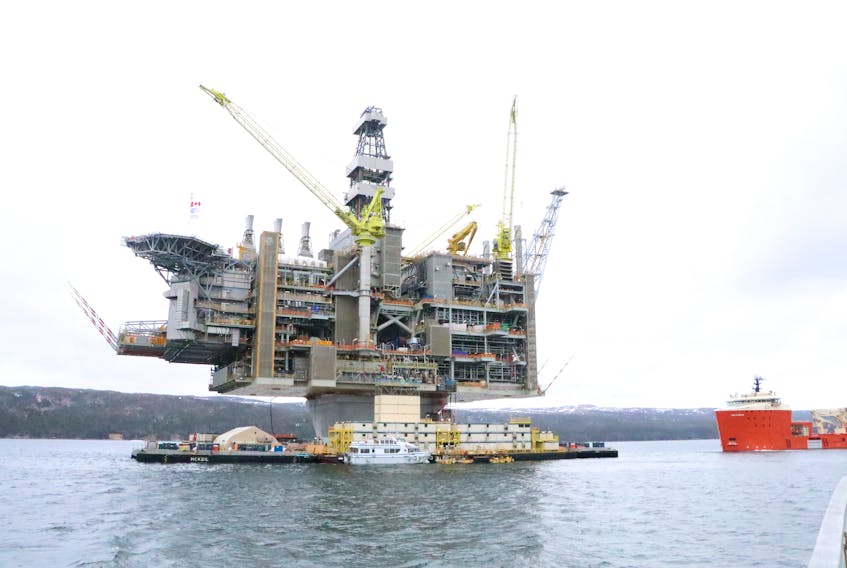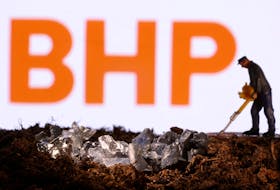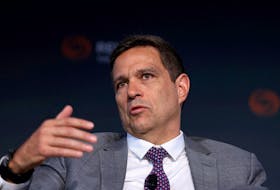
Everyone knows how big an impact Newfoundland and Labrador’s offshore oil and gas sector has on the province, right?
A bigly one. Lots of jobs, damned good salaries and lots of money for the oil companies and the provincial coffers.
All of us know someone involved.
Your neighbour who’s gone for a couple of weeks working offshore. Your niece who just got a well-paying engineering work term with one of the big oil companies (and who knows, maybe a shot at a full-time job with them when she graduates).
Everyone knows, right? Or maybe not.
A recent poll by CRA in Halifax showed a huge chunk of the province is very big on our oilpatch.
Eighty-eight per cent of people surveyed either completely or mostly supported the sector. (That’s as opposed to six per cent mostly and two per cent completely opposed to the sector.)
But far fewer of those polled had much in the way of detailed knowledge of how big a role the sector played in the economy.
That lack of knowledge is one of the reasons the Newfoundland and Labrador Oil and Gas Industries Association (Noia) commissioned economist David Campbell — a former chief economist for New Brunswick — to crunch the numbers and produce an economic report on the current impact and future potential of the provincial oilpatch. Noia released it Wednesday.
Campbell suggests that, if the Advance 2030 targets are reached, the province could see more than $100 billion in total royalty and tax revenues between 2018 and 2045.
First, Campbell looked back on how big an impact the sector has had on the province since the oil first started to flow in the late 1990s.
And the numbers are, indeed, big.
In 1998, a year after first oil, the oil sector added $1.9 billion to the province’s gross domestic product (GDP). That number grew steadily, hitting $8 billion in 2011. Since the hit on global oil prices, that number dropped, but still, in 2017, the oilpatch fed $6.1 billion into N.L.’s GDP.
In 2017, the sector supported 23,509 direct, indirect and induced jobs, led to $1.4 billion worth of consumer spending across the province and generated $2 billion in labour income.
But the meat of the new report looks to where the province’s oil and gas sector could be heading in the future.
Campbell analyzed a whole range of stats, projections and parameters to come up with how the sector might, could, look in 2033.
That date dovetails with the Advance 2030 “Plan for Growth in the Newfoundland and Labrador Oil and Gas Industry” the provincial government unveiled back in February.
Advance 2030 aims for production rates of 650,000 barrels of oil a day by 2030. Campbell’s study models an investment scenario that would reach that output target. And if — if — that target is reached by 2033, Campbell’s report suggests the province’s oil and gas sector has the potential to:
• increase total employment supported by the industry across the province to 56,000 jobs (direct, indirect and induced);
• boost labour income across the province to $4.6 billion a year;
• increase consumer spending to $3.5 billion a year; and
• increase provincial and local government tax and royalty payments to $6.7 billion in 2033.
Campbell suggests that, if the Advance 2030 targets are reached, the province could see more than $100 billion in total royalty and tax revenues between 2018 and 2045.
Now, this is a report commissioned by an oil industry association so, naturally, take it in that vein. It casts the impact of the industry so far and the potential impacts in the future in a very positive light, as you’d expect.
But all that being said, the report is, at the very least, eye-opening reading in terms of scale. And it’s a good start point to spark a debate — between industry, government and the public — on how we want the sector to evolve over the coming decades to help fuel our economy in as sustainable, safe and responsible way as we can.
You can read the full report and make your own conclusions online at ImagineThePotential.ca.
Mark Vaughan-Jackson is The Telegram’s business editor. He can be reached via email at [email protected].
Related story









